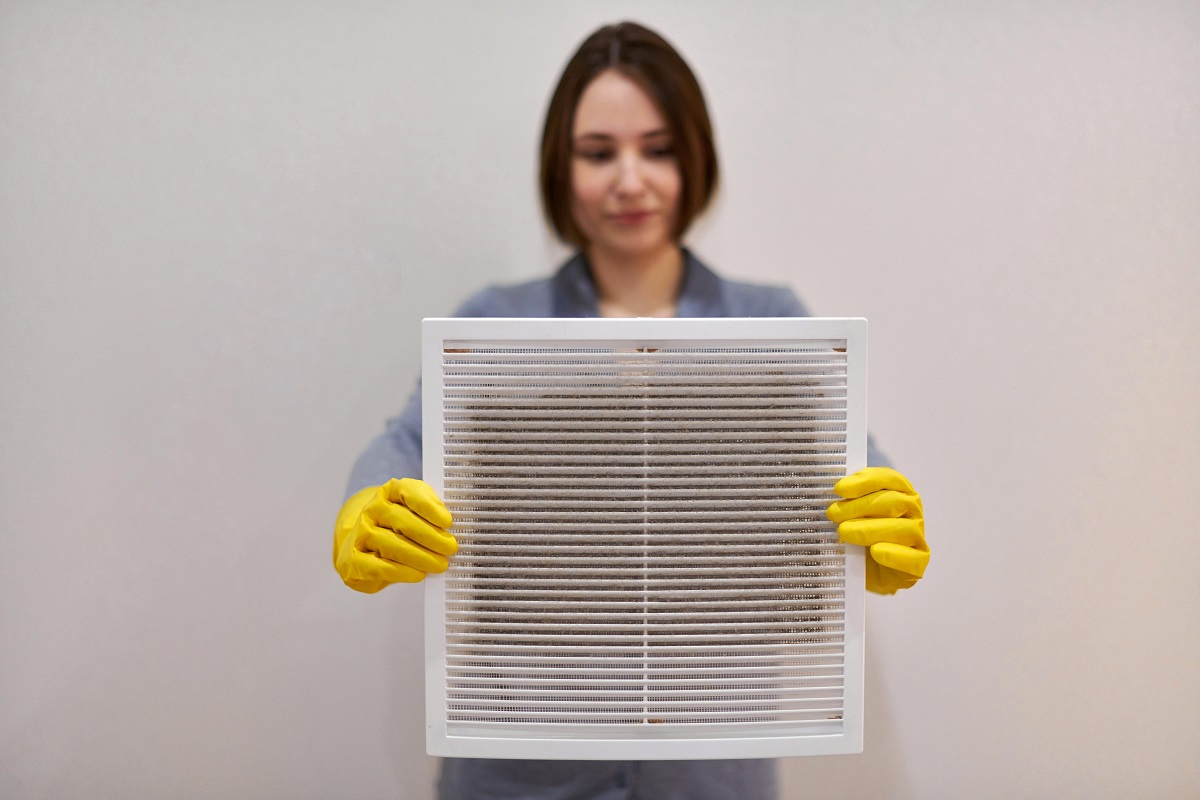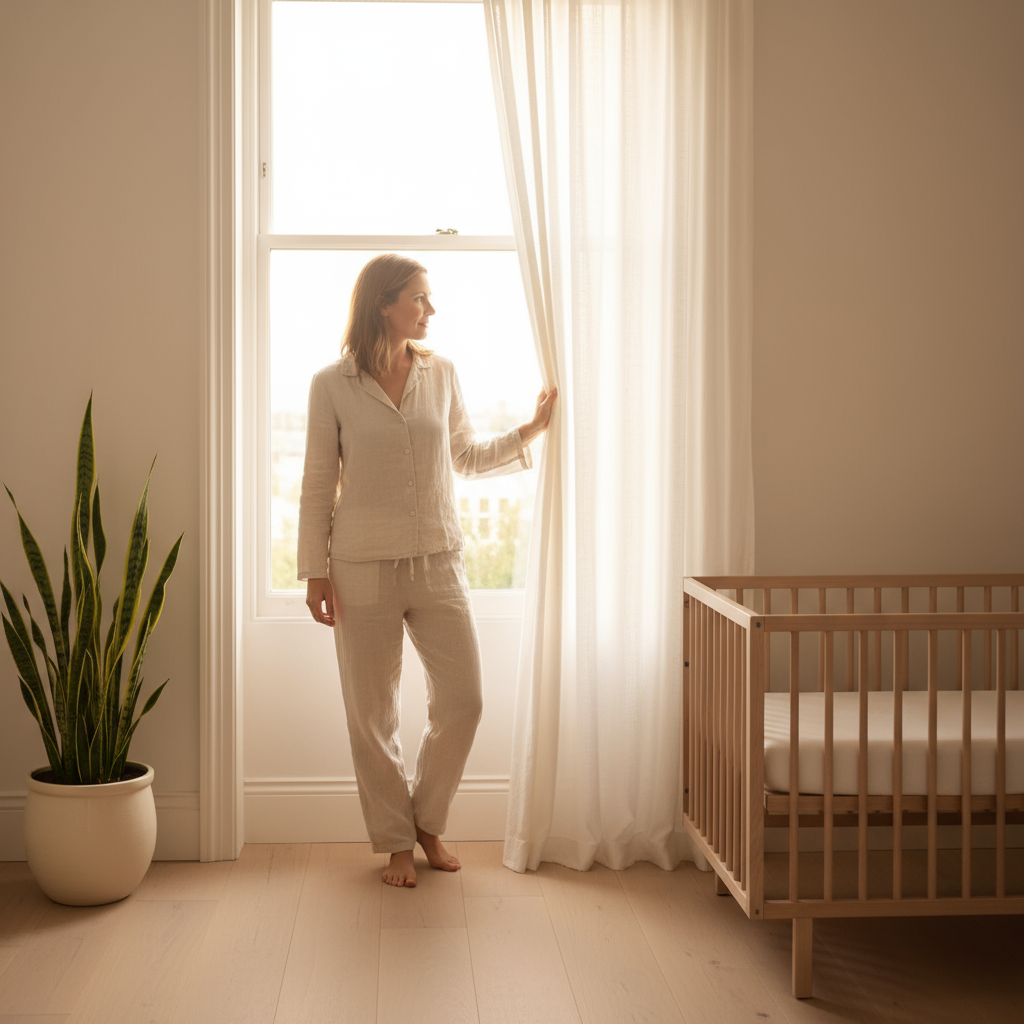At-Home Comprehensive Environmental Testing for a Healthy Home

The Ultimate Guide to At-Home Comprehensive Environmental Testing: Your Healthy Home Check-up
- Your home's environment directly impacts your family's health; issues like allergies, fatigue, and headaches are often linked to indoor factors.
- A comprehensive healthy home check-up should evaluate three key areas: your air, your water, and the potential presence of mold.
- At-Home Comprehensive Environmental Testing provides a convenient, professional-grade way to get a complete picture of your home’s wellness without disruptive appointments.
- Understanding the results from a reliable test allows you to take targeted actions, using Nestwell-certified solutions to improve your living space and well-being.
Table of Contents
- Is Your Home Secretly Affecting Your Health?
- Why is Understanding Home Environmental Risks So Important?
- What Are the Three Pillars of a Healthy Home Environment?
- DIY vs. Pro Testing: What’s the Best Method for Me?
Is Your Home Secretly Affecting Your Health?
Do you find yourself dealing with persistent sniffles, nagging headaches, or a sense of fatigue that just won't go away, even after a good night's sleep? You might blame it on seasonal allergies, a busy schedule, or just feeling a bit run down. But what if the source of these problems is not what you think? The answer could be all around you. It could be your home.
Yes, your home's environment can be the root cause of many unexplained health symptoms. The air you breathe, the water you drink, and invisible particles hiding in your living space can all have a major effect on how you and your family feel every single day. These issues often go unnoticed because they are hidden from sight, making it hard to connect the dots between your symptoms and your surroundings. You deserve to feel your best in the place you should feel safest.
This is where at-home comprehensive environmental testing becomes a crucial tool for taking back control of your well-being. Instead of guessing what might be wrong, you can get clear, scientific data about the health of your home. This guide will walk you through everything you need to know, from the hidden risks that might be present in your house to how you can get clear, actionable answers to fix them.
At Nestwell, our mission is to provide you with a "complete health picture," and that starts with the environment you live in every day. We believe everyone deserves to understand their living space fully. We empower you with the tools for a healthy home check-up so you can identify problems, implement effective solutions, and start feeling better, faster.
Why is Understanding Home Environmental Risks So Important?
Your home is your sanctuary, a place where you should feel safe, comfortable, and healthy. However, modern homes can trap a variety of substances that may pose a risk to your family's wellness. Proactively identifying these potential issues means you can move from just treating symptoms to addressing the source of the problem. Gaining knowledge about what is in your home is the first and most important step toward creating a truly healthy living environment.
Many of us are unaware of the microscopic world inside our homes and how it influences our bodies. From the chemicals released by new furniture to the quality of our tap water, these factors combine to create our unique indoor ecosystem. Learning about these elements is not about causing worry; it is about empowerment. When you are informed, you can make simple but powerful changes that have a lasting positive impact on your family's health and happiness.
The Surprising Health Effects of Indoor Air Pollution
Many people are surprised to learn that the air inside their homes can be significantly more polluted than the air outside. Our houses are built to be more energy-efficient, which is great for heating and cooling bills. However, this tight seal also means that airborne contaminants can get trapped inside, building up over time. You might breathe these substances in all day and all night without ever knowing it.
These invisible particles can lead to a wide range of indoor air pollution health effects. These reactions from your body can be mild at first but may become more serious over time.
- Breathing Issues: Irritants in the air can trigger or worsen conditions like asthma. You might notice more coughing, wheezing, or shortness of breath.
- Allergy-Like Symptoms: If you’re constantly sneezing, have a runny nose, or suffer from itchy eyes while at home, it might not be pollen. It could be dust, pet dander, or mold spores circulating in your air.
- Headaches and Dizziness: Certain chemicals found indoors can cause frequent headaches or a feeling of being lightheaded.
- Fatigue and Brain Fog: Feeling tired all the time or having trouble concentrating? Some indoor pollutants can affect your nervous system and make it difficult to feel sharp and energetic.
- Skin Irritation: Rashes, dryness, or itchiness can sometimes be caused by airborne chemicals or allergens landing on your skin.
Common sources of these pollutants include everyday items like cleaning products, air fresheners, scented candles, paint, and even fumes from cooking. Furniture and carpets can also release chemicals into the air, a process known as outgassing.
What are the Common Environmental Toxins in a House?
Beyond general air quality, specific substances can be present in your home that are known to be harmful. Identifying these potential invaders is key to protecting your family. Many of these toxins are odorless and colorless, making testing the only way to know for sure if they are present.
Here are some of the most common environmental toxins in house environments that a comprehensive test should look for:
- Volatile Organic Compounds (VOCs): These are gases released from many common household products, including paints, varnishes, cleaning supplies, and new furniture. They are a major source of indoor air pollution and are linked to the health effects mentioned above.
- Mold Mycotoxins: When mold grows, certain types can release toxic microscopic substances called mycotoxins into the air. Breathing these in can lead to serious health issues, from chronic respiratory problems to neurological symptoms.
- Lead: In homes built before 1978, lead can be found in old layers of paint. When this paint chips or turns to dust, lead particles can be inhaled or ingested. It can also get into tap water from old pipes. Lead is especially dangerous for children.
- Pesticides: These chemicals can be tracked into your home on the bottom of your shoes or can enter through open windows if used nearby. They can linger in carpets and on surfaces long after they are applied.
- Radon: This is a naturally occurring radioactive gas that you cannot see, smell, or taste. It can seep into your home through cracks in the foundation and is a leading cause of lung cancer for non-smokers.
Proactively understanding home environmental risks is the first step in creating a safer sanctuary for your family. This knowledge forms the foundation of a full home wellness assessment, allowing you to protect the people you care about most.
What Are the Three Pillars of a Healthy Home Environment?
When you decide to perform a check-up on your home, it can feel overwhelming. Where do you start? What should you look for? To make it simple, we can break a healthy home down into three core pillars: your air, your water, and the presence of mold. By evaluating each of these areas, you can get a complete picture of your home's environmental health and take targeted action where it matters most.
Think of these pillars as the legs of a stool. If one is weak, the entire structure becomes unstable. A truly healthy home requires that all three areas are clean and safe. Focusing on just one pillar while ignoring the others means you might miss a key piece of the puzzle that is impacting your family's well-being. Let's explore each one.
Pillar 1: Testing for Comprehensive Home Air Quality
Many people buy an air purifier and believe their job is done. While air filters can be helpful tools, they are only part of the solution. A purifier works best when you know exactly what you are trying to remove from the air. True wellness starts with understanding what you are breathing, and that requires a thorough indoor air quality check.
Achieving comprehensive home air quality means looking beyond just dust and pet dander. You need to investigate the invisible threats that standard filters might not be designed to catch. This is where a professional-grade home air quality test kit becomes so valuable. Unlike simple consumer monitors that might only measure dust or humidity, a lab-based test can detect the specific chemicals and particles that could be harming you.
A comprehensive test analyzes your air for things like Volatile Organic Compounds (VOCs). It can identify the specific types of VOCs in your home, such as formaldehyde from new furniture or benzene from cleaning products. It can also detect tiny, airborne mold spores that are too small to see but are easily inhaled deep into your lungs. By getting this detailed information, you can choose the right solutions, whether it’s a specific type of air purifier, better ventilation, or removing the source of the pollution altogether.
Pillar 2: Ensuring Purity with Water Quality Testing at Home
Your tap water may look perfectly clear and taste fine, but that doesn't guarantee it is free from contaminants. Both city water and well water can pick up a variety of unwanted substances on their journey to your faucet. These can include industrial chemicals, agricultural runoff, and metals from old plumbing. That is why routine water quality testing home supplies is a critical part of any healthy home plan.
For families, ensuring drinking water is pure is a top priority. A high-quality drinking water contaminants test provides peace of mind by screening for a wide range of hidden dangers. It goes far beyond what a simple pitcher filter test can do, giving you lab-verified results about what is really in your water. A thorough analysis should include:
- Heavy Metals: This includes dangerous metals like lead and arsenic. Lead can leach from old pipes and solder, while arsenic can occur naturally in groundwater. Both are toxic, especially for children's developing brains.
- Chlorine & Chloramines: These chemicals are used by water treatment plants to kill bacteria. While they serve a purpose, some people are sensitive to them, and they can create harmful byproducts.
- Bacteria: A test can screen for the presence of harmful bacteria like E. coli, which can cause severe illness if consumed.
- Nitrates/Nitrites: These often come from fertilizer runoff and can be particularly dangerous for infants and pregnant women.
- PFAS ("Forever Chemicals"): This is a group of man-made chemicals found in many industrial and consumer products. They do not break down easily and have been linked to a variety of health problems.
Knowing what is in your water allows you to select the right filtration system to target the specific contaminants found in your home, ensuring every glass is clean and safe.
Pillar 3: Following a Residential Mold Inspection Guide
Mold is a four-letter word that no homeowner wants to hear. It can cause property damage and, more importantly, can have serious health consequences. While some mold is obvious, much of it grows in places you cannot see, like behind walls, under floors, or inside your ventilation system. Following a simple residential mold inspection guide can help you spot potential problems.
Start with your senses. Do you notice a musty or earthy smell in your basement, bathroom, or kitchen? This is often the first sign of hidden mold. Visually inspect areas where moisture is common. Look for any discolored spots—black, green, or white—on walls, ceilings, or around pipes. Pay close attention to any areas that have experienced a past leak or water damage, as these are prime locations for mold growth.
However, it is critical to understand the limits of a visual check. You can’t see the microscopic mold spores floating in your air, and you can’t see the mycotoxins they may be releasing. This is why a simple visual inspection is not enough. For a true understanding of your risk, you need professional-grade mold assessment services at home. These services use lab analysis to test dust and air samples. This approach can identify the types of mold present and their concentration levels, which is essential information for determining the health risk and creating a plan to fix the problem for good.
DIY vs. Pro Testing: What’s the Best Method for Me?
Once you have decided to investigate your home’s environment, the next question is how to do it. You will quickly find two main options: do-it-yourself kits that you can buy online or in a store, and hiring a professional to come to your home. Each path has its own set of advantages and disadvantages, and choosing the right one depends on your goals for accuracy, convenience, and cost.
Understanding the difference between these methods is key to making sure you get the reliable answers you need to protect your family's health. Let's compare them so you can make an informed decision that is right for you.
The Pros and Cons of Basic DIY Home Health Testing
At first glance, standard DIY home health testing kits seem like a great option. They are readily available and are usually the most affordable choice. You can simply buy a kit, follow the instructions, and get a result within a short period. This accessibility makes it easy for anyone to take the first step in learning about their home environment.
However, this convenience often comes at a cost: accuracy and detail. Many store-bought kits are like taking a blurry picture of a problem. They might tell you that mold is present, for example, but they often cannot identify the specific type or how much of it is in your air. This lack of detail makes it hard to know if you are dealing with a harmless variety or a toxic one that requires immediate action. The results can also be unreliable or difficult to interpret, leaving you with more questions than answers and without a clear plan for what to do next.
The Pros and Cons of Professional At-Home Environmental Testing
On the other end of the spectrum is hiring an expert to perform professional at-home environmental testing. This is the gold standard for accuracy. A trained technician will visit your home with sophisticated equipment, take precise samples, and send them to a certified laboratory for in-depth analysis. They will provide you with a detailed report and can often offer expert advice on how to fix any issues they find.
The major downsides to this approach are cost and convenience. Hiring an on-site professional can be very expensive, often running into many hundreds or even thousands of dollars. It can also be disruptive. You have to schedule an appointment, which may require taking time off work, and have a stranger in your home for several hours. While the results are high-quality, the high price and hassle put this option out of reach for many families who just want clear answers without breaking their budget.
What is the Typical Indoor Environmental Assessment Cost?
Trust is important when it comes to your health, and part of that is being transparent about pricing. The indoor environmental assessment cost can vary dramatically depending on the method you choose. Trying to piece together a complete picture with multiple DIY kits of varying quality can cost anywhere from $100 to $300, and you may still be left with unreliable data.
On the other hand, a comprehensive on-site visit from a professional consultant typically starts around $500 and can easily exceed $1,500, especially if you need both air and water testing. This wide gap creates a difficult choice for many families: do you go with the affordable but potentially inaccurate option, or the reliable but prohibitively expensive one? This is the core problem that leaves many people stuck, worried about their home but unsure of the best way forward.
The Nestwell Advantage: Your Partner in Family-Safe Home Testing
You shouldn't have to choose between your budget and your family's health. You shouldn't have to sacrifice accuracy for convenience. Nestwell was created to bridge that gap, offering a modern solution that gives you the best of both worlds. We believe every family deserves access to professional-grade data about their home environment without the high cost and hassle of traditional methods.
We combine the simplicity of a do-it-yourself kit with the lab-certified accuracy of a professional service. Our process is simple: we mail a kit directly to your door, you collect the samples following easy instructions, and you mail them back to our certified lab. Our scientists then perform a thorough analysis, giving you the reliable and detailed results you need to make confident decisions about your home.
Nestwell is your premier partner for a complete home wellness assessment. We go beyond just testing. We are committed to providing family-safe home testing from start to finish. This means our collection methods are non-invasive, and our reports provide clear, actionable steps and Nestwell-certified solutions that are easy to implement. We help you create a healthier home without adding more stress to your life.
Our goal is to give you a "complete health picture," and that means connecting the dots between your environment and your well-being. Unlike services that just send you confusing lab data, our reports are designed to be easily understood. We explain what the findings mean for your health and provide a personalized plan to address any issues we uncover. We don't just tell you what's in your air; we give you a plan to fix it. This empowers you to move forward with confidence and create the safe, healthy sanctuary your family deserves.
Ready to get real answers? Explore Nestwell's At-Home Comprehensive Environmental Testing kit and start your journey to a healthier home today.
Frequently Asked Questions (FAQ)
Q: How often should I perform water quality testing at home?
A: For general peace of mind, we recommend performing a comprehensive test on your home's water supply annually. You should also consider testing any time you notice a change in your water's taste, smell, or appearance. Additionally, it is a good idea to test after moving into a new home or if you hear about any water quality issues in your local area.
Q: What is the typical indoor environmental assessment cost with a service like Nestwell?
A: Nestwell was designed to be a cost-effective alternative to hiring expensive on-site professionals. We provide professional, lab-grade results that are far more accurate than basic DIY kits, all for a fraction of the price of an in-person consultation. Our goal is to make comprehensive environmental testing accessible and affordable for every family.
Q: Is a DIY home air quality test kit accurate enough?
A: Most standard, store-bought DIY air quality kits lack the sensitivity and technology to provide truly accurate or detailed results. They may indicate a general issue but often fail to identify specific pollutants or their concentration levels. Nestwell's kits are different because they are professional collection tools. The samples you collect are sent to a certified lab for analysis using the same advanced equipment as professional consultants, ensuring you get professional-grade accuracy.
Q: What are the most common environmental toxins in a house that I should test for?
A: To get a full picture, you should test for a range of common culprits. Our comprehensive panel is designed to do just that, testing for the most prevalent and concerning toxins. This includes a wide range of Volatile Organic Compounds (VOCs), airborne mold spores from different species, and key contaminants in your drinking water, such as heavy metals and forever chemicals (PFAS).
Q: What's the difference between a simple mold test and full mold assessment services at home?
A: A simple mold test, like a petri dish you buy at the store, might just confirm the presence of mold. However, it often can't tell you the type of mold or, more importantly, its concentration in your air, which is critical for understanding health risks. A comprehensive assessment, like the service Nestwell provides, identifies the specific types of mold in your environment and their levels. This detailed information is vital for connecting symptoms to a root cause and creating an effective remediation plan.
Key Takeaways
- Your home's health matters: Indoor environments can cause allergies, fatigue, and headaches—test your air, water, and mold to identify and fix issues.
- Proactive testing empowers: Use at-home kits like Nestwell's for accurate, affordable insights into environmental risks without invasive visits.
- Know the three pillars: Comprehensive checks cover air quality (VOCs, spores), water purity (metals, PFAS), and mold presence for a full wellness picture.
- Choose wisely: DIY kits offer convenience but lack depth; professional at-home options provide reliable results at a lower cost than on-site visits.
- Take action now: Get clear data and actionable plans to create a safer, healthier sanctuary for your family with Nestwell-certified solutions.






